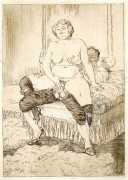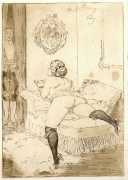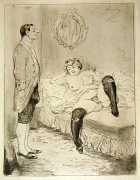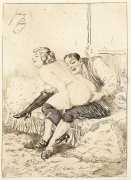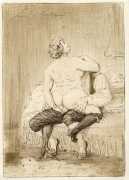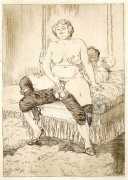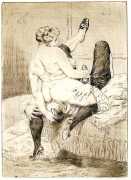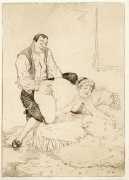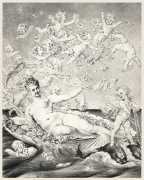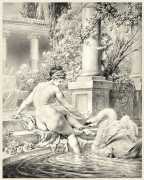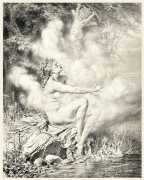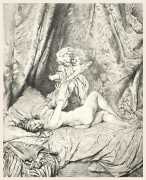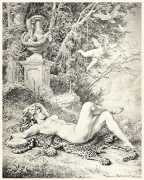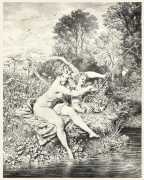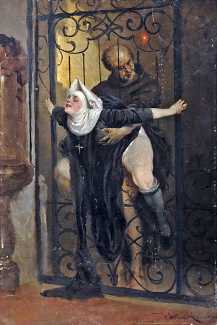
The German painter and engraver Heinrich Lossow was in many ways typical of his time, a skilled genre artist growing up in an artistic family in an artistic city; what made him notorious as well as talented were some of his subjects, particularly an 1880 painting of a nun being violated through a church grille by a priest.
Heinrich was the son of the sculptor Arnold Hermann Lossow and brother of the animal painter Friedrich. His father had moved from Bremen to Munich in 1820 to study under Ernst Mayer, where he married and had three children, Carl, Friedrich and Heinrich. All three boys had an affinity for art, and after studying the basics with their father went on to study under Karl Theodor von Piloty at the Munich Academy of Fine Arts. Heinrich travelled in Italy and France, spending some time in Paris in the 1870s. His rococo style was much in demand, and his paintings and engravings of bucolic rural scenes with abundant nymphs and cupids kept him busy.
The painting which brought his reputation into some doubt was Die Versündigung (The Sin), based on the (no doubt much-embellished) account of an orgy which took place within the Vatican in October 1501, when Cardinal Cesare Borgia, son of Pope Alexander VI, hosted a banquet in the Papal Palace where fifty prostitutes were in attendance for the entertainment of the guests. According to a contemporary account, ‘Following the supper, lampstands holding lighted candles were placed on the floor and chestnuts strewn about, which the prostitutes, naked and on their hands and knees, had to pick up with their mouths as they crawled in and out among the lampstands. The Pope watched and admired their noble parts. Members of the clergy and other party guests had sex with the prostitutes for prizes, which included silken doublets, shoes, hats and other garments, given to those men who were most successful. Servants kept score of each man’s orgasms, for the pope greatly admired virility, and measured a man by his ejaculative capacity.’ Painted as a commission, Die Versündigung was sold at auction in 2008 and is now again in a private collection.
Erotic subjects seem to have been much in Lossow’s mind as he reached middle age, as this was also when he produced the set of etchings entitled Ein treue Diener, though most of his work was more standard fare, including a set of illustrations for a new edition of Shakespeare’s The Merry Wives of Windsor.
Towards the end of his life he served as a curator at Munich’s Schleissheim Palace.

